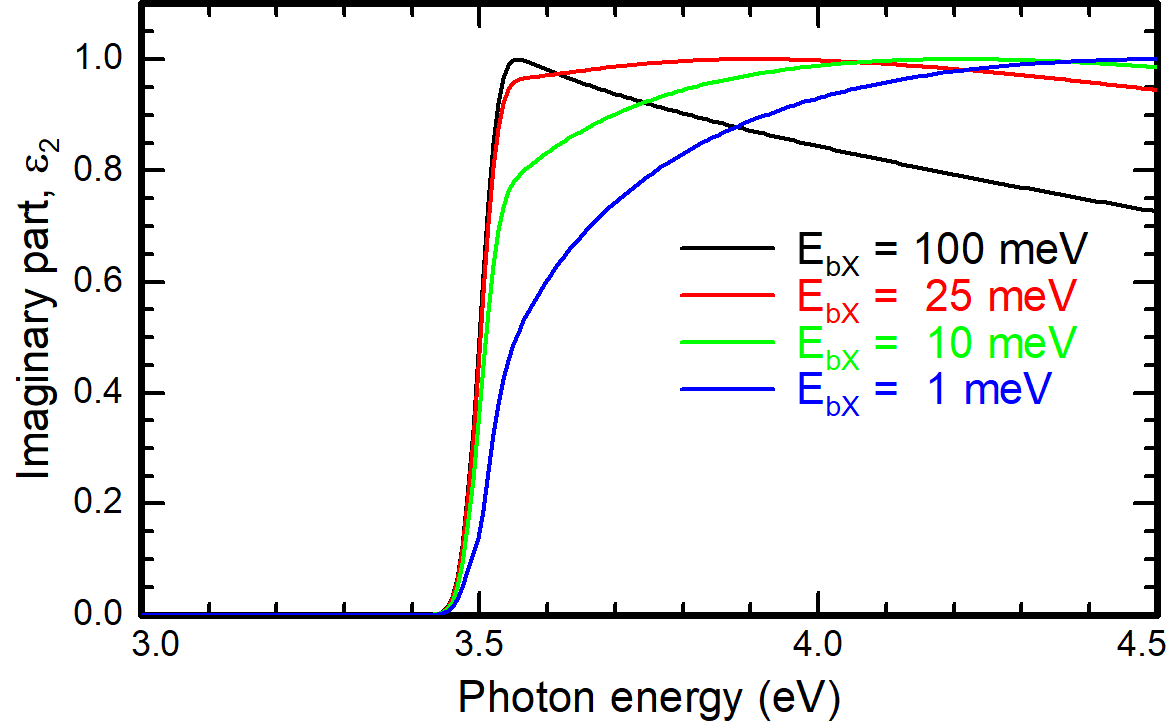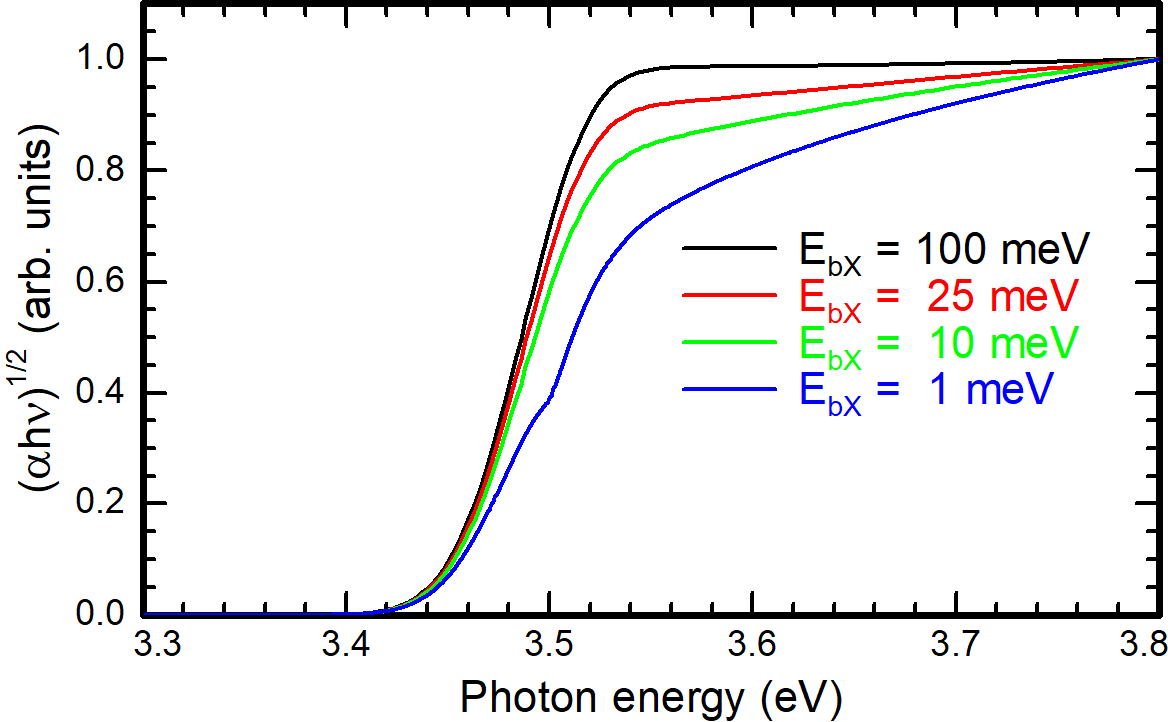Tauc plot
Q: Is it a good idea to use a Tauc plot to determine the band gap of a semiconductor?
A: No.
If you are considering to use a so-called Tauc plot (sometimes referred to as Tauc's method) to determine a band gap value, please think about the following very brief points.
The original work auf Tauc can be found here: J. Tauc, Optical properties and electronic structure of amorphous Ge and Si, Materials Research Bulletin 3, 37 (1968). Already from the title it is clear that Tauc proposed the method for amorphous materials. He tackled the specific problem of low conductivity despite large and delocalized wave functions.
If instead you are working on crystalline semiconductors, please consider an optical interband absorption process: An electron from the valence band is "lifted" into the conduction band, leaving a hole behind. In the final state, we therefore are concerned with an electron-hole pair. These two quasi-particles are charged oppositely and thus are attracted by Coulomb interaction. This very simple physical fact remains true even if the absorption process was taking place at a photon energy much higher than the band gap energy. However, a Tauc plot just takes into account the pure density of states, i.e. the form of conduction and valence band but ignores the Coulomb interaction.
The interaction strength between electron and hole is called exciton binding energy and we can calculate different model spectra for different exciton binding energies. We use a broadened Elliott model: R.J. Elliott, Intensity of Optical Absorption by Excitons, Phys. Rev. 108, 1384 (1957). The image shows the imaginary parts of the dielectric function (proportional to the absorption coefficient) for a model semiconductor with certain parameters. The band gap is fixed to Eg = 3.5 eV and the broadening parameter to 30 meV, the exciton binding energy EbX however is varied between 1 meV and 100 meV as given in the image:

We see, that the shape of the absorption onset varies drastically with the choice of EbX. In the next step, we create Tauc plots from these spectra.

Please consider now analyzing these Tauc plots by the usual extrapolation of the linear parts. Obviously, the true value of Eg = 3.5 eV can never be obtained due to the existence of EbX and broadening.
There are more limitations to the Tauc plot. A very extensive recent discussion can be found here: J. Klein et al., Limitations of the Tauc Plot Method, Adv. Funct. Mater.33, 2304523 (2023). A very nice publication dealing with one specific example is: A. Segura et al., Current underestimation of the optical gap and Burstein-Moss shift in CdO thin films: A consequence of extended misuse of α2-versus-hν plots, Appl. Phys. Lett. 99, 151907 (2011).
So, please do not use Tauc's method to determine band gap values for semiconductors as the method is simply not applicable.
(This page is still work in progress and will hopefully be improved soon. Current version: 1)